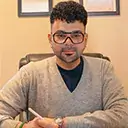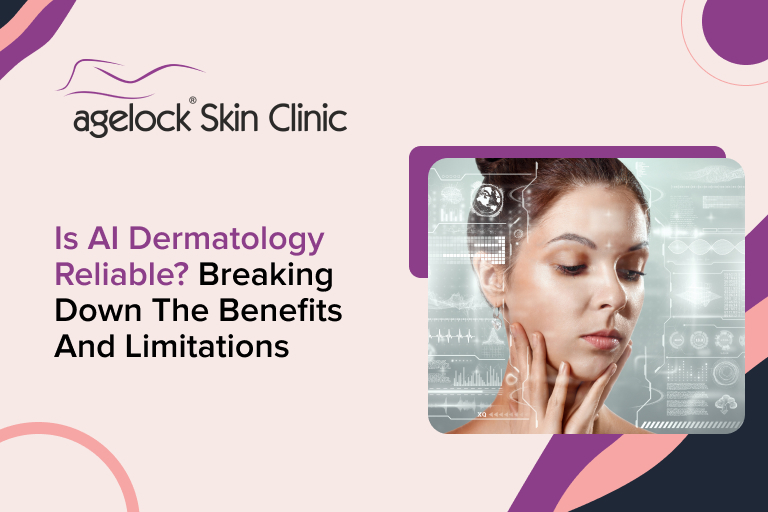Pimples are one of the most widespread skin disorders that different people experience at least once. They emerge suddenly and often when self-esteem is low; thus, they affect personal appearance. The only thing that can be said definitively about clearer skin, whether in the form of a few pimples or a rash of acne, is the type of breakout that was experienced. First, it is necessary to consider such aspects as the divisions of the acne breakout and how one can get a clean complexion. This article aims to discuss several types of breakouts, the symptoms, how to treat them, and how to prevent them.
What are Pimples?
Pimples is the term used to refer to the acne that results from the blockage of hair follicles by skin oils, dead cells and bacteria. As a result, inflammation is created, and different kinds of acne can occur here in anti-ageing skin care products. Inflammation leads to the formation of various types of pimples from this obstruction. Pimples can range in size, shape, and severity depending on what triggered them and where within your skin they start.
Common Types of Pimples
Knowing the various kinds of acne and what sort of zit you are being treated for is also helpful. Here are the most common types:
Whiteheads
Whiteheads are also known as closed comedones, and they are at the top of the list of the most frequently encountered kinds of pimples. They develop when a pore opens to the skin’s surface but is blocked by oil, sheds skin cells, and remains close to the skin’s surface.
Characteristics of Whiteheads
- Small, round, and white or flesh-coloured bumps
- They remain beneath the skin and do not have an open surface.
- Usually painless, but it can be frustrating due to their appearance.
Treatment for Whiteheads
- Salicylic Acid: It aids in pore unclogging by eliminating layers of dead skin cells.
- Benzoyl Peroxide: Kills bacteria and brings about a decrease in the degree of inflammation.
- Gentle Exfoliation: Dry shedding or forming the outer layer of dead skin should be managed using a mild scrub at least once a week.
Whiteheads, for the most part, are not hard to treat if one practises good hygiene when handling the skin and can be cured if treated often.
Blackheads
Another type of pimple is blackheads, also referred to as open comedone. Other types include whiteheads, closed comedones, papules, and pustules. Unlike whiteheads, blackheads contain a pore on the surface, making the trapped material oxidise and appear black.
Characteristics of Blackheads
- Small, dark, and flat spots on the skin
- Usually found on the nose, chin, and forehead.
- They are not inflamed, so they are typically painless.
Treatment for Blackheads
- Retinoids: Help promote cell regeneration and avoid blockage of pores.
- Clay Masks: Act as a button that can retain excessive oil and assist in pulling out elements that are not admirable from the skin.
- Pore Strips: These can temporarily reduce the visibility of the blackheads; however, they do not help prevent their formation in the future.
With proper care and correct approaches to washing and treating the skin, blackheads are more accessible to prevent.
Papules
Papules are small, red, inflamed pimples that result from the dissolution of the walls of the pores as they are congested by inflammation. This breakdown blocks the pores and causes them to become inflamed.
Characteristics of Papules
- It can be tender to the touch
- Small, raised, red bumps without a visible pus-filled head.
- Often appear in clusters and can make the skin feel rough.
Treatment for Papules
- Ice Packs: Applying an ice pack can help reduce redness and swelling.
- Benzoyl Peroxide: Reduces bacteria on the skin and calms inflammation
- Topical Retinoids: Help to reduce inflammation and prevent further breakouts.
Consistent use of anti-inflammatory products can help reduce the appearance of papules and prevent them from developing into more severe types of pimples.
Pustules
Pustules are similar to papules but contain pus. They appear as red, swollen bumps with a white or yellow centre.
Characteristics of Pustules
- It can be sensitive to touch and painful.
- Often appear on the back, face, and shoulders.
- Red and inflamed with a white or yellow centre filled with pus.
Treatment for Pustules
- Salicylic Acid: It unblocks the pores and prevents the formation of new pustules.
- Warm Compress: Warm compress should be applied as it makes the pimple discharge much easier.
- Topical Antibiotics: Facilitate minimisation of bacterial deposit, hence minimising the incidence of bacterial-related infection.
Pustules should be handled delicately to minimise the formation of scars, and packing them can worsen the pustules.
Nodules
Nodules are a more severe type of acne than pustules. They happen when acne forms a deep-down bump that is very large and painful.
Characteristics of Nodules
- Do not contain pus and are usually not inflamed
- It can linger for weeks or even months if not treated properly.
- Large, complex, and often painful lumps beneath the skin’s surface.
Treatment for Nodules
- Avoid Squeezing: Squeezing nodules can lead to scarring and worsen the condition.
- Oral Medications: Prescription medications like antibiotics or isotretinoin may be required
- Corticosteroid Injections: A dermatologist can inject a corticosteroid directly into the nodule to reduce inflammation.
A dermatologist best treats nodules, as over-the-counter treatments are often not strong enough to effectively manage them.
Cysts
Cysts are the most severe type of pimple, often associated with cystic acne. They are large, pus-filled lumps that form deep under the skin.
Characteristics of Cysts
- Large, red, and painful lumps filled with pus
- It can be tender to the touch and may lead to scarring.
- Often associated with hormonal imbalances and may require medical intervention.
Treatment for Cysts
- Oral Medications: Antibiotics or isotretinoin are often necessary to treat cysts.
- Drainage: A dermatologist may need to drain the cyst to reduce pain and inflammation.
- Hormonal Treatments: Birth control pills or anti-androgen medications can help if cystic acne is linked to hormonal imbalances.
Cysts require professional treatment to prevent scarring and manage the pain effectively.
Preventing Pimples: Steps to Clearer Skin
It is also right to treat pimples, though the most significant victory is to prevent such formation. Here are some tips on how to have clearer skin and avoid breakouts:
Establish a Daily Skincare Routine
- Cleaning Up: To clean your face, wash it with soap and water at least two times every day to eliminate the oils and dirt.
- Exfoliating: Wash off the buildup of the dead skin cells on your face often, but avoid physical scrubs that are rough on your skin.
- Moisturising: Do not use products that plug the pores; a non comedogenic moisturiser will nourish your skin and thus lead to fewer breakouts.
Watch Where You Put Forks
- Stay Away from Chocolate Bars: Sweeteners in sweets cause sebum production, which results in more pimples.
- Eat Foods Rich in Omega-3 Fatty Acids: In this area, we have seafood, which includes fish and walnuts, which possess properties that heal the inflammation problem due to the qualities of omega-3 fatty acids.
Stress Management Techniques Are Vital
- Pressure and Pimples: Hormones released during stress multiply oil secretion that has already accumulated in the facial area.
- Stress Relief Techniques that Work: Employ such methods as yoga, meditation, or any other deep breath control mechanism to keep yourself calm all the time.
Avoid Touching Your Face
- Hands-Free Phones: When answering cell phones, use hands-free phones because more acne may develop when you press them against your skin.
- Avoid Hand-to-Face Contact: When you touch your face, avoid those places where there are pimples because this could lead to more pimple formation than before.
Pimples originate from some factors that can be eliminated to a certain extent.
Summary
It is necessary to have some understanding of the various types of pimples and to handle them properly. To effectively prevent and treat these different types of acne, they must be identified with their respective causative factors and treatment ways towards more transparent skin. To avoid occurrences of pimples, one has to maintain three things regularly: skin care practices, healthy lifestyle decisions and, if the situation requires so, seeking help from a professional dermatologist. Remember that everybody has their skin type, and it takes time to find the ideal one for yourself. Well-cared-for skin, with time, will always be in good condition regardless of how much impact it would have on one’s life.








